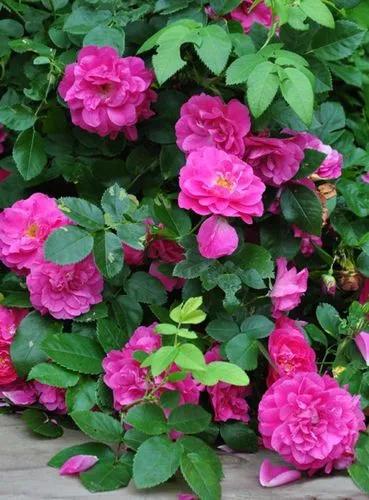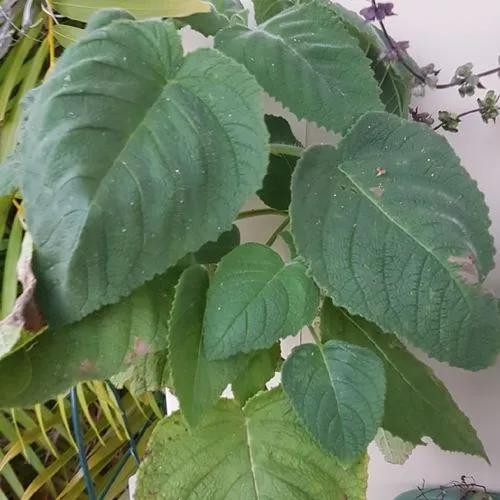Hibiscus rosa-sinensis is a bushy, evergreen shrub or small tree growing 2.5–5 m (8–16 ft) tall and 1.5–3 m (5–10 ft) wide, with glossy leaves and solitary, brilliant red flowers in summer and autumn. The 5-petaled flowers are 10 cm (4 in) in diameter, with prominent orange-tipped red anthers. The flowers are large, conspicuous, trumpet-shaped, with five petals and their colors can be white to pink, red, orange, peach, and yellow or purple that are 4–18 cm broad. The flowers from various cultivars and hybrids can be either a single flower or a double flower. At the bottom of every hibiscus bud is the calyx which is green in color. The pointed ends of the calyx are the sepals. When the hibiscus begins to bloom, the petals begin to grow which contains multiple petals and multiple colors. The ovary and other female parts of the flower lie in the main structure of the hibiscus, the pistil, which is long and tubular. The hibiscus has both male and female parts on the same flower. The five hairy red spots on the top of the flower is the stigma (female part) of the flower. The stigma is located at the end of the style branch. At the top of the pistil is known as the stigma, where pollen is collected, and in the middle is the style, which is the section that the pollen travels down to the ovary. The ovary lies at the bottom of the blossom and the hibiscus has only one ovary which is superior.
Cajun Hibiscus Care
Cajun Hibiscus



How to Care for the Plant

Water

Tropical hibiscus is a thirsty plant and will thrive and produce blossoms only if it is given enough water. Depending on the heat, wind, and humidity in your environment, your plant may need to be watered daily, or even twice a day in extremely dry conditions. Typically, tropical hibiscus plants thrive best with one to two inches of water per week. If your hibiscus is dropping leaves, or you're seeing yellowing leaves at the top of the plant, chances are it's not getting enough water. Likewise, if your hibiscus has yellowing leaves in the middle or toward the bottom of the plant, it's probably drowning in too much water.

Pruning

The best time for pruning tropical hibiscus is in the fall for both garden and container plants. Pruning will help keep your tropical hibiscus flowering as buds form on the new growth that has been stimulated by pruning, and removing some branches can let in some much-needed light.

Fertilizer

When you buy a potted hibiscus, it likely has a slow-release fertilizer mixed into the soil, so it will not require additional feeding in the first few months. After that, regular feeding with a diluted fish emulsion fertilizer will keep it blooming vigorously.

Temperature

The tropical hibiscus plant prefers average temperatures between 55 and 70 degrees Fahrenheit. Prolonged heat over 85 degrees Fahrenheit can result in dropping buds and leaves.

Popularity

103 people already have this plant 28 people have added this plant to their wishlists
Discover more plants with the list below
Popular articles






